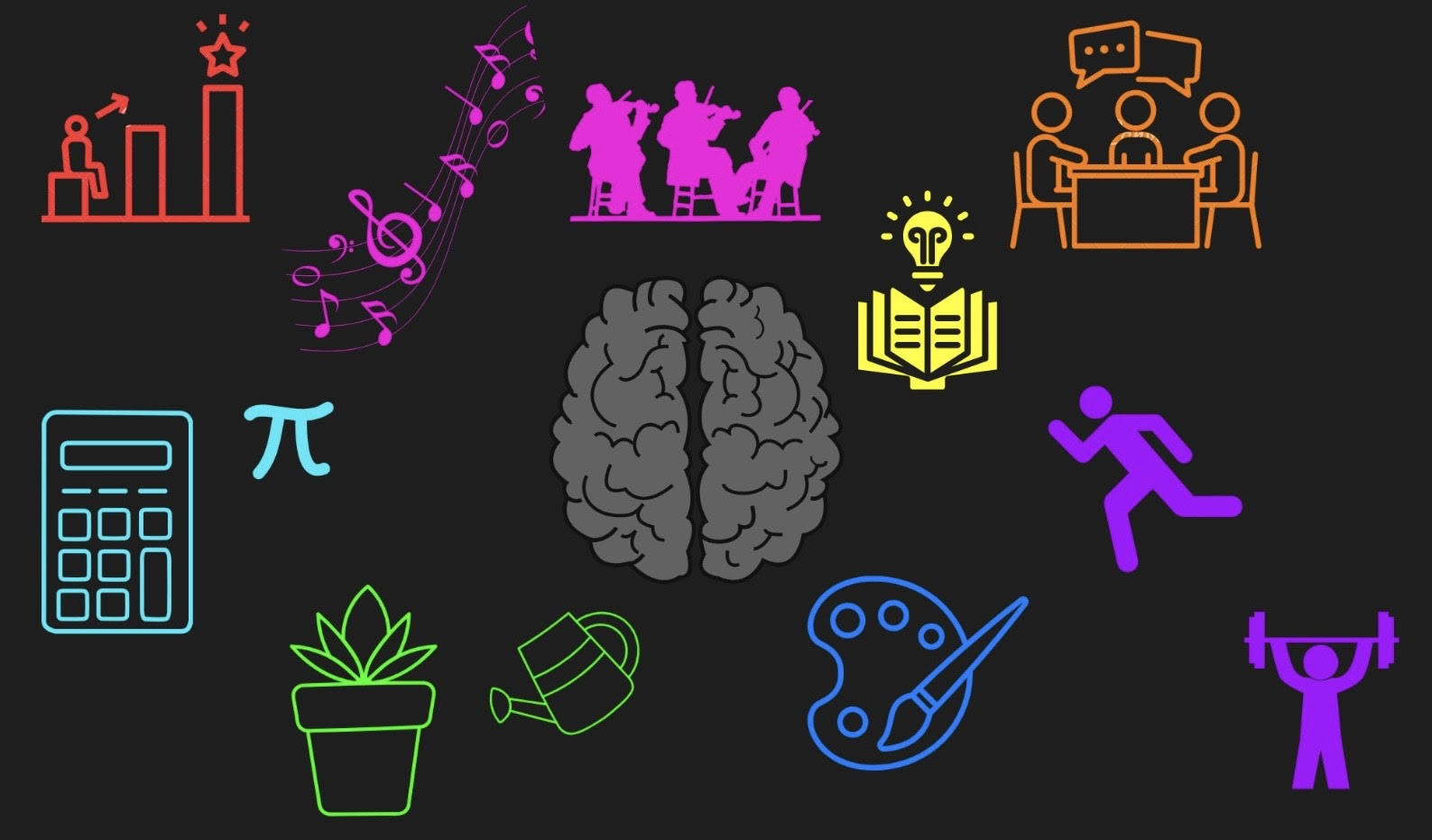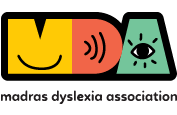
MI in the Classroom
Multiple Intelligences
By Swetha Krishna
Every child is different with a unique profile and a combination of intelligences. They indicate what the child would enjoy doing and be good at naturally. The profile also indicates how the child processes information, and learns best. However, the intelligences need opportunities to develop further and for the child to realise his potential!
Key points in the MI theory
Having understood the description of the MI theory, it is important to remember certain points of the MI model.
Each person posses all eight intelligences: the MI theory is not a ‘type’ theory that puts people into individual slots. It is a theory about how we function, and that all of us possess all intelligences in varying degrees.
Most people can develop all intelligences to a certain degree: however much we all like to believe that our weaknesses are things we’re born with, and cannot be improved, Gardner suggests that virtually everyone has the ability to improve their abilities in every intelligence to a reasonably high level if provided with the right opportunity, and encouragement.
Intelligences do not exist in isolation: though for the purpose of better understanding we separate all intelligences, they work together in fascinatingly complex networks. They do not exist in isolation and are always interacting with each other. No skill can be performed with just one intelligence alone.
There are several ways in which people display their intelligence: one may be tempted to think, that an intelligence exhibits itself in the same way in all people, however Gardner points out that, a single intelligence can be seen in different ways in different people. For eg: someone may well be a clumsy dancer but could be a master at embroidery thus exhibiting high bodily kinesthetic intelligence.
Multiple Intelligences in the classroom
Using multiple intelligences in the classroom could be a very effective way of catering to the needs of all children. It adapts itself quite seamlessly to the Universal Design of Learning, that recommends:
- Multiple means of representation-give learners various ways of acquiring information and knowledge
- Multiple means of expression-provide learners alternatives for demonstrating what they know
- Multiple means of engagement-tap into learners’ interests, offer appropriate challenges, and increase motivation
The theory adapts itself to various teaching and learning situations taking into consideration that there are various combinations of intelligences in children.
Points to keep in mind while using MI in the classroom:
- Every intelligence does not have to be incorporated into every lesson
- It is not enough to just surround students with stimuli from various intelligences, it needs to be actively worked on
- There isn’t significant merit in formally labeling each student
- Student understanding of MI model and how it is being used is essential in effective learning
- While it is essential to give students the choice of the intelligences through which they would pursue their learning, they also need to be encouraged to explore all intelligences
Not only is MI as effective tool to teach students in the classroom, it also acts as an effective Classroom Management tool by –
Recognising Individual strengths
“Everybody is a genius. But if you judge a fish by its ability to climb a tree, it will live its whole life believing it is stupid”- Albert Einstein.
This is a powerful quote for educators and curriculum developers to live by. The moral it tries to convey is that every child is smart in their own special way, and one way is not better than any other. Using the MI model to explain to children and parents that each child is special, and when instruction is presented to them in their way, they all can learn.
The most important role of the teacher here is to observe, observe, observe. They have to very keenly look at how their students do things and what they are not doing. For example, during a classroom discussion, an “Intrapersonal” child, may be very quiet, listening to everyone and may not be comfortable if put in the spot to speak, the musical child may be tapping the pencil, the bodily kinesthetic child maybe shaking their legs, and the interpersonal child may be very participative and thriving in the situation. This information they collect through observations can be combined with the child’s own assessment of their strengths to present their intelligence profile.
Diversifying to strengthen
While making a lesson plan, teachers can focus on one or two intelligences a day. This way they can incorporate all intelligences into a certain topic catering to the needs of all children. For example a topic in mathematics can be taught
- Monday: Logical Mathematical: use number lines, graphs, puzzles and brain games
- Tuesday: Bodily Kinesthetic: manipulatives, body formations, movement in the classroom
- Wednesday: Linguistic: picture books, journaling, poems
- Thursday: Spatial: dominoes, cards, manipulatives, flash cards with drawings
- Friday: Naturalistic: nature walk with observation journals
- Monday: Interpersonal: cooperative groups and games
- Tuesday: Intrapersonal: journaling, individual rubrics to check work
- Wednesday: Musical: sing math facts, musical instruments to play patterns
Homework can also focus on different sets of intelligences over the course of the topic, giving learners the opportunity to work on their weaker intelligences sometimes and thriving using their strengths sometimes.
Reaching out to the marginalised
Varying how we present information becomes very important to sustain student engagement and interest. It makes the experience more rewarding for everyone and ensures nobody is marginalised. If we have the belief that every student is smart, then it comes very naturally that we have to teach in a way that would appeal to them.
The minute we introduce a lesson that takes into consideration the needs and interests of all children, the classroom becomes a space of immense joy and learning. Children look forward to come into class and automatically student engagement increases. This significantly reduces the classroom management challenges.
What really does a classroom with MI entail?
For most of us a classroom is a room filled with rows of tables and chairs facing the board, where a teacher is taking a lesson. However, this is not necessarily the only way a classroom needs to be. The MI model requires that the classroom be restructured to suit the dynamic needs of every learner. The MI theory provides a template that helps us ask seeking questions into whether the environment is suitable for children and promotes or interferes with learning. Answers to these questions will give a fair idea of the quality of the learning environment – whether it will nurture the eager students who are willing to learn or not be engaging enough that they get uninterested.
MI and Special Education
The MI theory has a very significant impact on special education, as it primarily looks at an individual in a holistic way. This implies that rather than a person being shunned for their difficulties, the model celebrates their strengths. This fits beautifully into special education, where the educator and system need to find ways to help the person overcome their difficulties using their strengths. In general, special educators have always looked at a deficit model – what are the difficulties faced, and how can those be remediated. Using an MI approach to Special Education helps us focus on the strengths of a person, build their confidence and self-esteem and then help them to overcome their difficulties. Thus, the MI theory helps us understand a student with special needs based on what they can do, while it still recognises the difficulty, the person is not defined by it. Hence it provides a very positive approach to Special education.
The most rewarding part of teaching really is to have the satisfaction that we have reached out to every type of learner. The MI model, helps us archive this by first helping us understand our students better, giving us an idea of their strengths and needs, then by giving us structure to diversify in such a way that no child in the classroom is left out. It becomes very relevant to use this model as we move towards achieving the Sustainable Developmental Goals (SDG) as adopted by the United Nations. The SDG 4 on Quality Education is to “Ensure inclusive and equitable quality education and promote lifelong learning opportunities for all”
